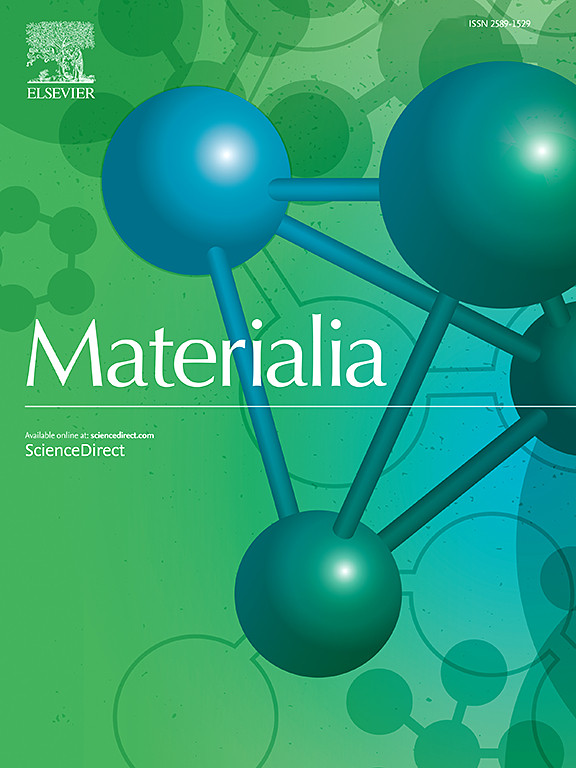In situ CLSM observation of Austenite microstructural evolution during hot deformation
IF 3
Q2 MATERIALS SCIENCE, MULTIDISCIPLINARY
引用次数: 0
Abstract
In-situ observations of microstructure evolution during the thermomechanical processing of low-carbon steel have been carried out using a high-temperature tensile testing system (HiTTS) integrated with a confocal laser scanning microscope (CLSM). Experiments were conducted within the temperature range between 800 to 1200 °C, and employing a strain rate of 0.001 s−1 to analyze the evolution of austenite microstructure at different temperatures and to identify the deformation and restoration mechanisms. The findings suggest that at temperatures below 900 °C, planar slip is the dominant deformation mechanism, and slip transfer is more favorable at twin boundaries than at grain boundaries. On the other hand, dynamic recrystallization (DRX) is identified as the primary restoration mechanism above 900 °C. The study identifies various nucleation sites for DRX grains, with triple junctions and grain boundaries serving as the nucleation sites at 900 °C. As the temperature increases to 1000 °C and above, new nucleation sites, such as inside annealing twin boundaries and free twin ends, are observed. The microstructure results suggest that the morphology of the twin boundary changes and loses its character during deformation. The role of annealing twin boundaries on DRX and bulging mechanisms associated with the various nucleation sites are discussed in great detail. Finally, the operational details, including temperature variations along the gauge length and thermal profile adjustments, including overshooting and undershooting and high-temperature surface reactions such as oxidation, decarburization, and evaporation, are meticulously examined.

热变形过程中奥氏体组织演变的原位CLSM观察
利用高温拉伸试验系统(HiTTS)和激光共聚焦扫描显微镜(CLSM)对低碳钢热变形过程中的显微组织演变进行了现场观察。实验在800 ~ 1200℃的温度范围内,采用0.001 s−1的应变速率,分析了不同温度下奥氏体组织的演变,并确定了变形和恢复机制。结果表明,当温度低于900℃时,平面滑移是主要的变形机制,且滑移转移在孪晶界处比在晶界处更有利。另一方面,在900°C以上,动态再结晶(DRX)被确定为主要的恢复机制。研究确定了DRX晶粒的各种成核位点,在900°C时,三重结和晶界作为成核位点。当温度升高到1000℃及以上时,观察到新的成核位点,如退火孪晶界内和自由孪晶端。结果表明,变形过程中孪晶界的形貌发生了变化,失去了原有的特征。详细讨论了退火孪晶界对DRX的作用以及与不同成核位置相关的胀形机制。最后,详细检查了操作细节,包括沿量规长度的温度变化和热剖面调整,包括过冲和欠冲以及氧化、脱碳和蒸发等高温表面反应。
本文章由计算机程序翻译,如有差异,请以英文原文为准。
求助全文
约1分钟内获得全文
求助全文
来源期刊

Materialia
MATERIALS SCIENCE, MULTIDISCIPLINARY-
CiteScore
6.40
自引率
2.90%
发文量
345
审稿时长
36 days
期刊介绍:
Materialia is a multidisciplinary journal of materials science and engineering that publishes original peer-reviewed research articles. Articles in Materialia advance the understanding of the relationship between processing, structure, property, and function of materials.
Materialia publishes full-length research articles, review articles, and letters (short communications). In addition to receiving direct submissions, Materialia also accepts transfers from Acta Materialia, Inc. partner journals. Materialia offers authors the choice to publish on an open access model (with author fee), or on a subscription model (with no author fee).
 求助内容:
求助内容: 应助结果提醒方式:
应助结果提醒方式:


